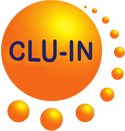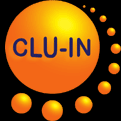Search Result
WATERFRONT TORONTO: OVERVIEW OF BENCH AND PILOT-SCALE TESTING
Janes, M.
Smart Remediation Toronto, January 25, 2018. 17 slides, 2018
Filed Under: Demonstrations
Filed Under: Demonstrations
Formerly a large natural wetland, the 356-ha Port Lands area was infilled in the early 1900s to make more land available to serve Toronto's growing industrial sector and shipping needs. To complete brownfields revitalization and protect the area from flooding, over 1 million m3 of soil will be excavated to create a new river valley. A portion of the soil will be reused to construct flood protection walls. Waterfront Toronto has been testing in situ technologies that remediate or stabilize NAPL within the project area, prior to the initiation of the excavation work. Key components of the project are to prevent any NAPL migration to the future river valley, reduce over-excavation for channel design slopes, and treat excavated and dredged material to levels that allow its reuse within the project area. Innovative but proven technologies are being tested for soil remediation. Ten bench-scale studies were completed and six pilot tests are underway to evaluate and maximize options for soil reuse. Results of the bench-scale studies are reviewed and an overview of interim pilot results is presented. A combination of in situ and ex situ soil remediation strategies will likely be implemented. http://www.smartremediation.com/wp-contentsmart/uploads/2018/03/SMART-Remediation-Toronto-2018-Meggen-Janes.pdf
Smart Remediation Toronto, January 25, 2018. 17 slides, 2018
Filed Under: Demonstrations
Filed Under: Demonstrations
Formerly a large natural wetland, the 356-ha Port Lands area was infilled in the early 1900s to make more land available to serve Toronto's growing industrial sector and shipping needs. To complete brownfields revitalization and protect the area from flooding, over 1 million m3 of soil will be excavated to create a new river valley. A portion of the soil will be reused to construct flood protection walls. Waterfront Toronto has been testing in situ technologies that remediate or stabilize NAPL within the project area, prior to the initiation of the excavation work. Key components of the project are to prevent any NAPL migration to the future river valley, reduce over-excavation for channel design slopes, and treat excavated and dredged material to levels that allow its reuse within the project area. Innovative but proven technologies are being tested for soil remediation. Ten bench-scale studies were completed and six pilot tests are underway to evaluate and maximize options for soil reuse. Results of the bench-scale studies are reviewed and an overview of interim pilot results is presented. A combination of in situ and ex situ soil remediation strategies will likely be implemented. http://www.smartremediation.com/wp-contentsmart/uploads/2018/03/SMART-Re
The Technology Innovation News Survey welcomes your comments and
suggestions, as well as information about errors for correction. Please
contact Michael Adam of the U.S. EPA Office of Superfund Remediation
and Technology Innovation at adam.michael@epa.gov or (703) 603-9915
with any comments, suggestions, or corrections.
Mention of non-EPA documents, presentations, or papers does not constitute a U.S. EPA endorsement of their contents, only an acknowledgment that they exist and may be relevant to the Technology Innovation News Survey audience.





